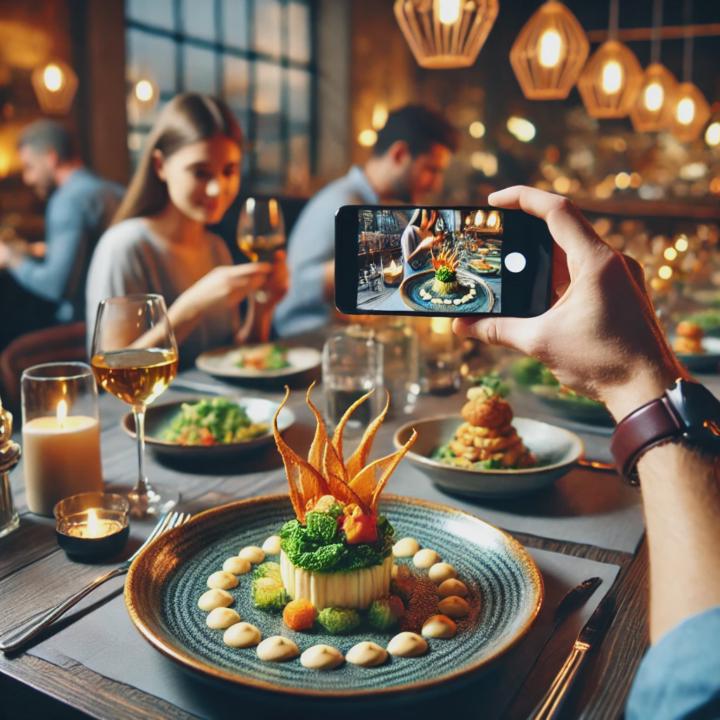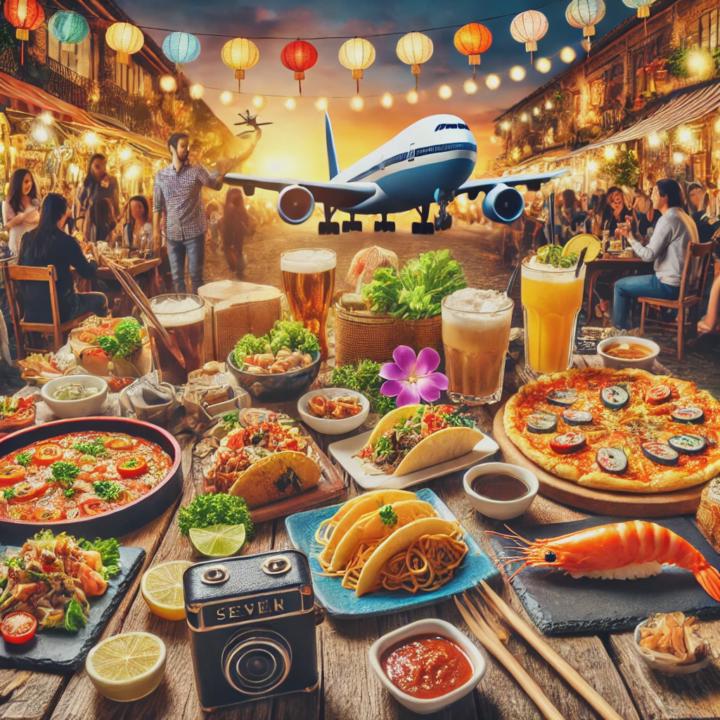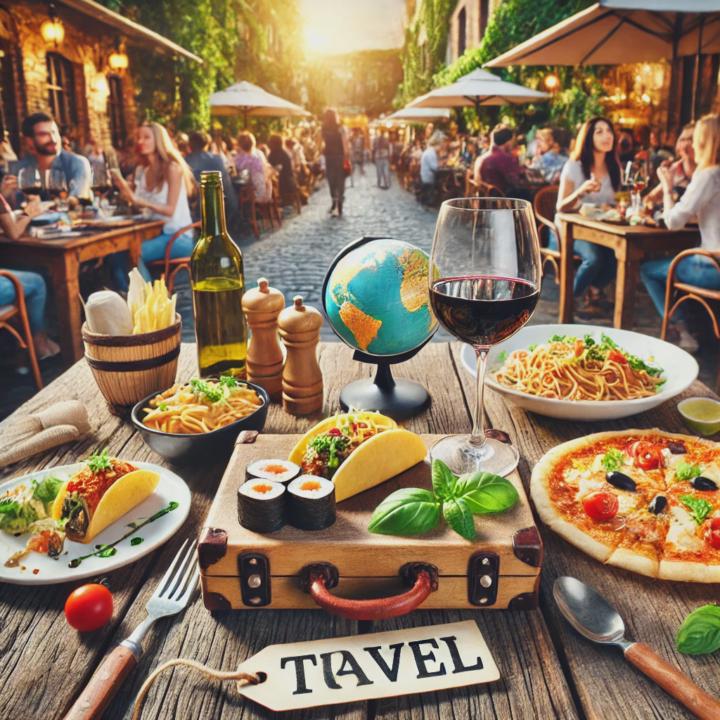
Write something
The Impact of 'Foodie Culture' on the Restaurant Industry
The rise of 'foodie culture' has significantly transformed the restaurant industry, influencing dining preferences, culinary trends, and business operations. Defining 'Foodie Culture' 'Foodie culture' refers to a societal shift where individuals exhibit heightened interest in food exploration, culinary experiences, and gastronomic knowledge. This movement has evolved from niche communities to mainstream audiences, driven by factors such as globalization, media proliferation, and social media platforms. Influence on Culinary Diversity The demand for diverse and authentic culinary experiences has led restaurants to expand their menus, incorporating global flavors and fusion cuisines. Diners now seek unique dishes that offer a blend of traditional and contemporary tastes, encouraging chefs to experiment and innovate. This trend has resulted in a rich tapestry of dining options, reflecting various cultural influences. Emphasis on Ingredient Quality and Sustainability Foodie culture has heightened awareness about ingredient sourcing, quality, and sustainability. Consumers are more informed and concerned about where their food comes from, leading restaurants to adopt farm-to-table practices, prioritize local sourcing, and ensure ethical procurement. This shift not only caters to consumer preferences but also promotes environmental responsibility within the industry. Rise of Pop-Up Restaurants and Experimental Dining The desire for novel dining experiences has given rise to pop-up restaurants and experimental dining concepts. These temporary establishments allow chefs to showcase creativity without long-term commitments, offering diners exclusive and ephemeral culinary adventures. Such formats have democratized the dining scene, enabling emerging chefs to introduce innovative ideas to the public. Impact of Social Media and Food Influencers Social media platforms have amplified foodie culture, with influencers and food bloggers shaping dining trends and restaurant reputations. Visually appealing dishes and unique dining experiences are frequently shared online, driving traffic to establishments and setting new standards for presentation and service. This digital exposure has become a crucial marketing tool for restaurants aiming to attract a broader audience.
0
0

Exploring the World's Top Culinary Cities
In our quest to savor global flavors, certain cities stand out as culinary havens. Based on insights from Time Out's recent survey, here's a spotlight on five cities that have earned acclaim for their exceptional food scenes. 1. New Orleans, USA New Orleans leads the list, celebrated for its rich culinary history influenced by French, Spanish, Vietnamese, and African cultures. The city offers a diverse range of dining experiences, from iconic establishments like Antoine's to neighborhood favorites such as Parkway Bakery & Tavern. Traditional dishes like shrimp Creole, jambalaya, and red beans and rice are staples, and events like the Jazz Fest highlight the city's gastronomic diversity. 2. Bangkok, Thailand Bangkok is renowned for its vibrant street food culture, offering a plethora of flavors that cater to all palates. The city's culinary scene is both affordable and diverse, with dishes that can be customized to individual tastes. This adaptability and the bustling food markets make Bangkok a top destination for food enthusiasts. 3. Medellín, Colombia Medellín has emerged as a culinary hotspot, blending traditional Colombian flavors with innovative culinary techniques. The city's food scene reflects its cultural renaissance, offering a mix of classic dishes and contemporary cuisine that appeals to both locals and visitors. 4. Cape Town, South Africa Cape Town's culinary landscape is a melting pot of flavors, influenced by its diverse cultural heritage. The city boasts a variety of dining options, from traditional African cuisine to modern fusion dishes, making it a vibrant food destination. 5. Madrid, Spain Madrid's food scene is both legendary and dynamic, blending traditional Spanish cuisine with innovative culinary trends. The city is home to renowned establishments like El Invernadero and La Tasquería, reflecting its diverse and experimental culinary landscape. Conclusion These cities exemplify the rich tapestry of global cuisines, each offering unique flavors and dining experiences. Exploring these culinary destinations provides not only delightful tastes but also insights into the cultures and traditions that shape their food scenes.
0
0

Savoring the World: How Destination Dining Elevates Travel Experiences
In our quest for memorable journeys, food often emerges as a central theme, transforming ordinary trips into extraordinary culinary adventures. Destination dining has become a pivotal aspect of modern travel, offering cultural immersion and unforgettable flavors. The Rise of Culinary Tourism Culinary tourism, the pursuit of unique and memorable eating experiences, has gained prominence as travelers seek deeper connections with the places they visit. According to the World Food Travel Association, food and beverage expenses account for 15% to 35% of all tourism spending, highlighting the significance of food in travel planning. Planning Journeys Around Food Many travelers now design their itineraries around culinary experiences. Consulting prestigious guides like the James Beard Awards or the World's 50 Best Restaurants list can lead to exceptional dining adventures. These resources spotlight eateries that offer not just meals but immersive cultural encounters. Personal Culinary Adventures Reflecting on recent travels, the impact of food becomes evident: - Abu Dhabi: Enjoying tender shawarma with fresh, crunchy pickles upon arrival. - Paris: Savoring ramen on a favorite street, blending Japanese flavors with Parisian ambiance. - Bogotá: Ascending by cable car to relish chicken soup with beans atop a mountain, served in a humble Styrofoam bowl.These experiences underscore how local cuisines enrich travel, making destinations more memorable. Destination Dining as Entertainment Dining has evolved into a form of entertainment, comparable to attending concerts or visiting landmarks. Restaurants serve as venues for cultural exchange, offering insights into local traditions and global influences. Whether it's a street vendor or a Michelin-starred establishment, each meal contributes to the narrative of a place. Global Influences on Culinary Experiences The fusion of global flavors has led to innovative dining options worldwide. For instance, the rise of gin distilleries in countries like Kenya and Vietnam showcases how local ingredients and traditions adapt to global trends.
0
0

📸 Foodie Photo Challenge: Show Off Your Best Shot!
Snap a photo of the most delicious dish you’ve had while traveling and share it! 📷🍽️ Let’s see who has the best foodie pic!
0
0
😱 Most Unexpected Food You’ve Tried?
Have you ever eaten something totally wild while traveling? 🐙🔥 Tell us the craziest thing you’ve tasted and if you’d eat it again!
0
0
1-7 of 7

skool.com/foodie-travel-1823
🔐 Unlock EXCLUSIVE foodie secrets & MASTER global flavors! 🌍🍽️ DISCOVER hidden gems & BOOST your travel food game! Join now! ✈️
Powered by
